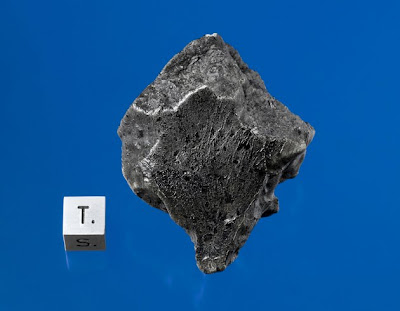Scientists are confirming a recent & rare invasion from Mars: meteorite chunks from the red planet that fell in Morocco last July.
This is only the fifth time scientists have confirmed chemically Martian meteorites that people witnessed as they fell. The fireball was spotted in the sky six months ago, but the rocks were not discovered on the ground in North Africa until the finish of December.
This is an important & distinctive opportunity for scientists trying to learn about Mars' potential for life. So far, no NASA or Russian spacecraft has returned bits of Mars, so the only Martian samples scientists can examine are those that come here in meteorite showers.
Scientists & collectors of meteorites are ecstatic, & already the rocks are fetching large money because they are among the rarest things on Earth, rarer even than gold.
A special committee of meteorite specialists, including some NASA scientists, confirmed the check results Tuesday. They certified that 15 pounds (7 kilograms) of meteorite recently collected came from Mars. The largest rock weighs over two pounds (one kilogram).
 |
| the real rock from mars |
Astronomers think millions of years ago something large smashed in to Mars & sent rocks hurtling through the solar process. After a long journey through space, of those rocks plunged through Earth's atmosphere, splitting in to smaller pieces.
Most other Martian meteorite samples sat around on Earth for millions of years, or at the very least for plenty of years, before they were discovered, which makes them tainted with Earth materials & life. These new rocks, while still probably contaminated because they have been on Earth for months, are purer.
The last time a Martian meteorite fell & was found fresh was in 1962. All the known Martian rocks on Earth add up to less than 240 pounds (110 kilograms).
The new samples were scooped up by dealers from those who found them. Even before the official certification, scientists at NASA, museums & universities scrambled to buy or trade these meteorites.
"It's a free sample from Mars. That is what these are, except you need to pay the dealers for it," said University of Alberta meteorite professional Chris Herd, who heads the committee that certified the discovery.
 |
| handout photo of the real mars rocks that fell in Africa |
One of the crucial decisions the scientists made Tuesday was to connect these rocks officially to the fiery plunge witnessed by people & captured on video last summer. The announcement & the naming of these meteorites called Tissint came from the International Society for Meteoritics & Planetary Science, which is the official group of 950 scientists that confirms & names meteorites.
Meteorite dealer Darryl Pitt, who sold a piece to Herd, said he charges $11,000 to $22,500 an ounce & has sold most of his supply already. At that cost, the new Martian rock costs about ten times over gold.
"It's scientifically invaluable," Herd said. "These are pretty specimens. It is a rare type, so fresh & aesthetically pleasing."
Several of the world's top specialists in meteorites, including those who work for NASA, told The Associated Press that they were sure this was a piece of Mars. Tony Irving of the University of Washington is the scientist who did the scientific analysis on the rocks & said there is no doubt that they are from the red planet.
Scientists can tell when meteorites are from Mars because they know what the Martian atmosphere is made of, thanks to numerous probes sent there. The chemical signature of the rocks & the Martian air match, Irving said. Another clue is that because planets like Mars are more geologically active, its rocks tend to be much more youthful millions of years elderly in lieu of hundreds of millions or more than those from the moon or asteroids.
Most of the Martian rocks on Earth have been around for hundreds of years or longer & have been present in Antarctica or the desert. They look so similar to dark Earth rocks that in the event that they fell in other places, such as Maryland, they would blend right in & never be discovered, Irving said.
Jeff Grossman, a NASA scientist who is the Meteoritical Society's database editor, said there is a higher probability of finding "something interesting" from Mars on these rocks because they fell so recently.
However, six months is a long time for Earthly contamination to take root, they said.
Herd said the first thing they would do with the rocks would be to rinse them with solvents to try to get rid of earthly contamination & see what carbon-based compounds are left.
A Martian meteorite that was buried in Antarctica made news in 1996. NASA scientists theorized that the rock, present in 1984, showed signs of traces of life from Mars, fossils of what appeared to be lifelong forms. Even the White House made an announcement about it as the first sign of life outside of Earth. Years of study since then have led much of the astronomy world to conclude that there was not facts to support the claim.
Because known Martian meteorite falls happen only one time every 50 years or so 1815 in France, 1865 in India, 1911 in Egypt & 1962 in Nigeria this is a once-in-a-career or even one-in-a-lifetime event.
"It's astoundingly fresh. It is highly valuable for that reason," said Carl Agee, director of the Institute of Meteoritics & curator at the University of New Mexico. "For someone who knows their Martian, this is a beauty. It is pretty." - The story when mars rocks fell in africa.










No comments:
Post a Comment